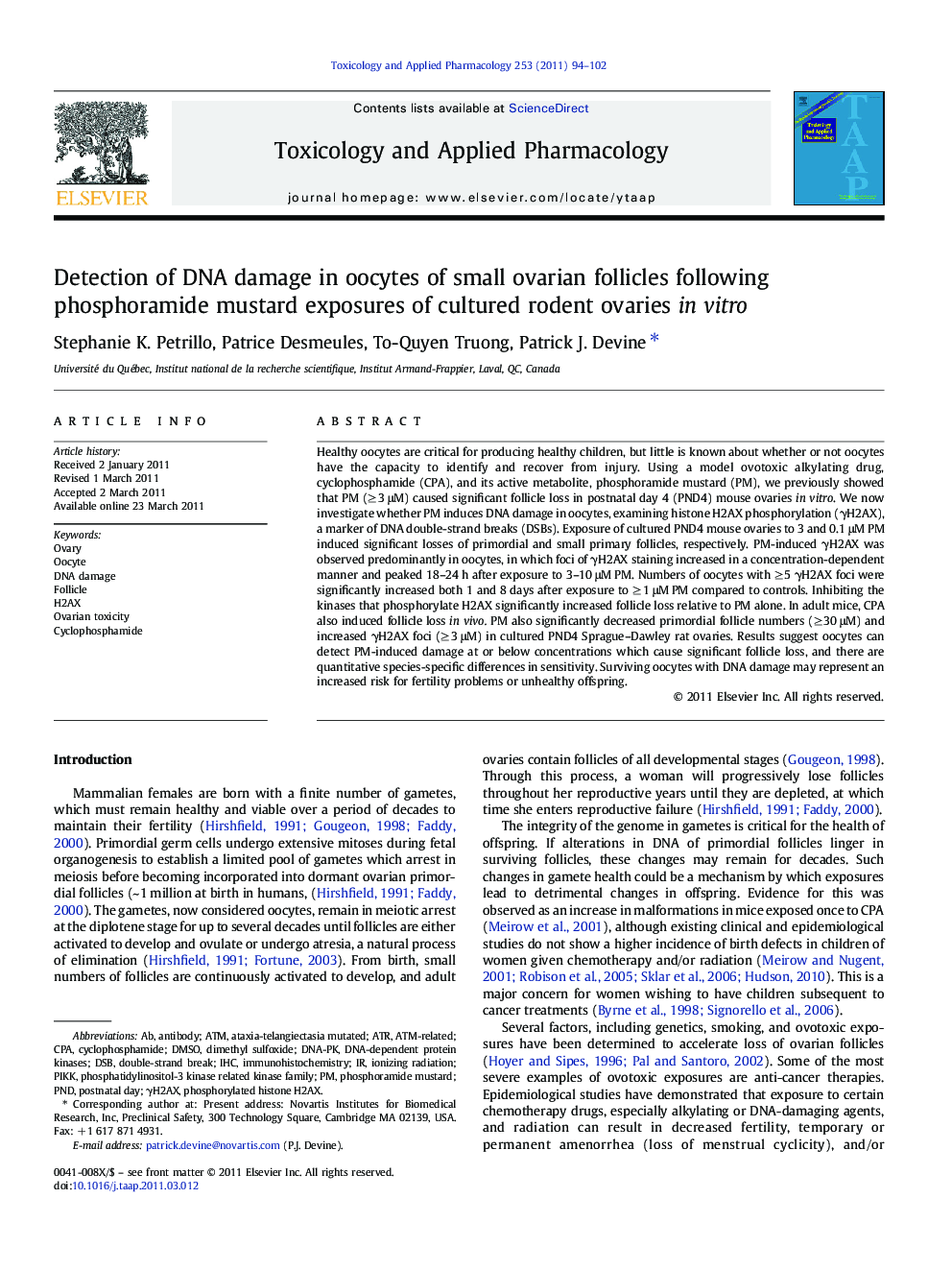| Article ID | Journal | Published Year | Pages | File Type |
|---|---|---|---|---|
| 2569588 | Toxicology and Applied Pharmacology | 2011 | 9 Pages |
Healthy oocytes are critical for producing healthy children, but little is known about whether or not oocytes have the capacity to identify and recover from injury. Using a model ovotoxic alkylating drug, cyclophosphamide (CPA), and its active metabolite, phosphoramide mustard (PM), we previously showed that PM (≥ 3 μM) caused significant follicle loss in postnatal day 4 (PND4) mouse ovaries in vitro. We now investigate whether PM induces DNA damage in oocytes, examining histone H2AX phosphorylation (γH2AX), a marker of DNA double-strand breaks (DSBs). Exposure of cultured PND4 mouse ovaries to 3 and 0.1 μM PM induced significant losses of primordial and small primary follicles, respectively. PM-induced γH2AX was observed predominantly in oocytes, in which foci of γH2AX staining increased in a concentration-dependent manner and peaked 18–24 h after exposure to 3–10 μM PM. Numbers of oocytes with ≥ 5 γH2AX foci were significantly increased both 1 and 8 days after exposure to ≥ 1 μM PM compared to controls. Inhibiting the kinases that phosphorylate H2AX significantly increased follicle loss relative to PM alone. In adult mice, CPA also induced follicle loss in vivo. PM also significantly decreased primordial follicle numbers (≥ 30 μM) and increased γH2AX foci (≥ 3 μM) in cultured PND4 Sprague–Dawley rat ovaries. Results suggest oocytes can detect PM-induced damage at or below concentrations which cause significant follicle loss, and there are quantitative species-specific differences in sensitivity. Surviving oocytes with DNA damage may represent an increased risk for fertility problems or unhealthy offspring.
